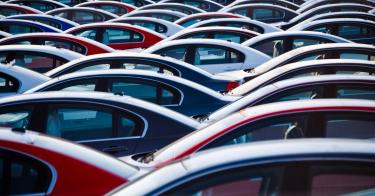In just a few days, the Trump administration could impose new tariffs on automobile and auto-parts imports.
The administration has erroneously claimed that tariffs are a necessary national security measure, supposedly needed to safeguard the American automobile market from foreign competitors and to create space for U.S. companies to undertake additional research and development.
However, even if the R&D budgets of American companies were the proper concern of the government—which they aren’t—tariffs are likely to backfire.
According to the Center for Automotive Research, “Any new barriers to trade will have a significant impact on the U.S. automotive industry, consumer prices, and U.S. sales, employment, and economic output.”
For starters, if the Trump administration were to impose a 25 percent tariff on automobile products, the price of a new car could increase by as much as $2,750 and up to 366,900 U.S. jobs could be lost.
Those increased costs would strain capital in the auto industry. The Congressional Budget Office observed that “the tariffs [would] raise domestic prices, thereby reducing the purchasing power of domestic consumers and increasing the cost of business investment.”
In other words, higher car prices would result in the automotive companies selling fewer cars, which would mean lower revenues and less capital freed up for R&D.
Investment in automotive R&D is already very strong in the U.S. Traditionally “domestic” manufacturers (such as Ford and General Motors) invested more than $34 billion in R&D between 2013 and 2017. Meanwhile “foreign” manufacturers invested only $20 billion during that same period.
Companies are focusing a significant amount of investment on next-generation technologies. For example, Hyundai and Kia are partnering with Aptiv to invest $1.6 billion, investments that are already likely to spur U.S. automobile companies’ R&D for autonomous vehicles.
If tariffs are implemented, it could undercut American competitiveness in the auto market. Tariffs on parts increase the cost of car production, and tariffs on finished cars increase the cost of car imports.
These upward pressures relative to prices in the rest of the world could make the U.S. a less productive market for automotive manufacturing. An uncompetitive environment in the U.S. could lead companies to focus their R&D in other markets.
Wharton business school professor of management John Paul MacDuffie emphasized that “[w]hile some U.S. automakers are cutting back capacity at plants that no longer bring in the desired revenues and profits, their foreign counterparts are making fresh investments.”
Already, companies are investing elsewhere. Tesla, for example, recently received an exemption from China’s 10% purchase tax, allowing its exports to China to remain competitive. Tesla is also building a Giga-factory in Shanghai that will be “the first fully foreign-owned car plant in China.”
New tariffs would make it more expensive for automotive manufacturers in the U.S. to produce and sell cars. An increase in tariffs on automotive products could also fuel the decisions of companies like Tesla to focus new investment abroad.
The best way to increase R&D in the U.S. is to promote innovation and competition, not erect new trade barriers. Competitive tax policies and deregulation can also help businesses focus their capital expenditures on R&D.
For the health and future of the automotive industry, the administration would be wise to refrain from imposing tariffs next week.
This piece originally appeared in The Daily Signal



